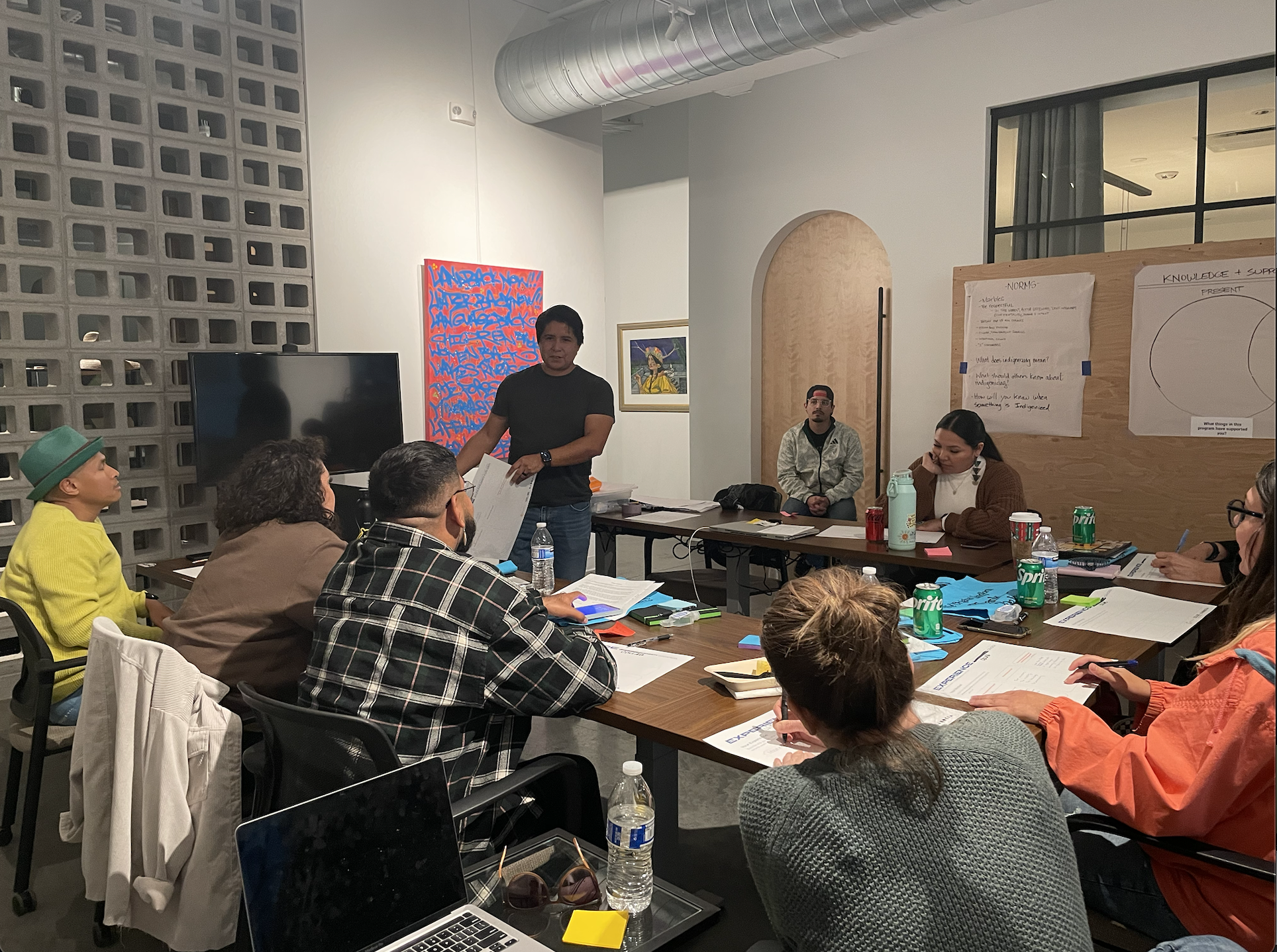Introducing A Framework for Indigenizing Design

Catapult Design in partnership with a collective of Arizona-based Indigenous organizations, including CahokiaPHX, Brian Skeet Design LLC, and Indigenous Community Collaborative, worked to center Indigenous designers, creatives, and entrepreneurs by co-creating an Indigenizing Design Framework. This project was funded by the National Endowment for the Arts 2022 Design Grant.
Scoping the Project Brief
Catapult Design’s mission is to improve the quality of life of underserved communities through accessible and innovative design. A core part of this mission is collaborating with those with lived experiences and employing participatory design processes that surface their needs.
The Indigenizing Design project started as a partnership between Catapult Design and the Indigenous leaders from CahokiaPHX, Brian Skeet Design LLC, and Indigenous Community Collaborative. Catapult Design has an existing relationship with this community due to our past projects, such as Navajo Hopi COVID-19 Crisis Design, and we value building sustainable relationships with our partners. Together we co-designed a project brief that addressed the critical challenges facing Indigenous designers, creatives, and entrepreneurs working and collaborating within Western design spaces today.
We set out to develop an Indigenizing Design Framework with the goal of contributing to a more equitable and just future by promoting economic and cultural vitality within the Indigenous community through new design practices. The collaborative partnership approach required centering and empowering the voices of Indigenous designers, creatives, and social entrepreneurs from Arizona-based urban and reservation-based communities to understand what Indigenizing means to them based on their personal lived experiences and as members of the CahokiaPHX social tech and artspace.

Community members define the language and values that best describe Indigenizing to them.
Why Indigenize Design?
At Catapult Design, we leverage Human-Centered Design practices within our design processes and methodologies. HCD is a problem-solving process that involves understanding the lived experiences and contexts of people and communities to inform decisions about policies, processes, and services that impact their lives. Despite the holistic focus on understanding lived experiences, HCD does have some limitations, and ‘Design’ as an industry and vocation is rooted in Western epistemologies and approaches that may not be appropriate or effective for Indigenous contexts (Why Can’t the U.S. Decolonize Its Design Education?). Often Indigenous communities and their values, culture, and teachings are watered down and overlooked leading to inequities and a loss of self-identity. Additionally, traditional design approaches forget the incorporation of environmental or non-human factors into the design process. In contrast, Indigenous cultures have long-standing relationships with the land, promoting ecological balance, and practicing their sovereignty (The Time For Environment-Centered Design Has Come).
By centering Indigenous perspectives and rethinking the traditional design processes we hope to address these limitations and create a more inclusive and effective design process. With this new Indigenizing Design Framework, we hope to enable solutions that prioritize social and economic equality, and place-based environmental stewardship and care.

Six Indigenizing Markers

The Ecosystem of Indigenizing overlaid with CahokiaPHX community context
The Final Outputs
The final deliverables of the Indigenizing Design Framework consists of three parts:
- Indigenizing Markers: Values that define Indigenizing and indicators that identify if Indigenizing has happened in a space.
- Ecosystem of Indigenizing: Visualization of the Indigenizing Markers and their relationships in a particular context.
- Indigenizing Curriculum: Lesson plans and activities to learn how.
This Indigenizing Framework is intended for use by both Indigenous practitioners, as well as Non-Indigenous designers and organizations who seek to work with Indigenous communities in a respectful and meaningful manner.
To learn more information about the Indigenizing Design Framework and project, download and read the report.
To learn more about how National Endowment for the Arts grants impact individuals and communities, visit www.arts.gov.
